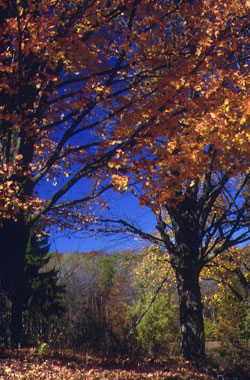Forestry Management
- Timber Stand Improvement
- Woodland Inventory
- Forestry Education
- Management Plans
- Professional Services
- Managing for Wildlife
- Tree Plantings
- Timber Sales
- Logging Concerns
 The purpose of this web page is to inform both forest landowners and non-landowners of the advantages of actively managing forested land, and what resources are available to assist them. Since harvesting timber is such an important decision with long lasting effects (positive or negative), much of this publication is about the importance of seeking professional harvest planning and implementation advice.
The purpose of this web page is to inform both forest landowners and non-landowners of the advantages of actively managing forested land, and what resources are available to assist them. Since harvesting timber is such an important decision with long lasting effects (positive or negative), much of this publication is about the importance of seeking professional harvest planning and implementation advice.
In viewing this web page, landowners are encouraged to think about what their goals and objectives are for their forested land. Sometimes landowners have a very clear vision of what they want to do- plant trees, harvest trees, or reduce losses to insects, disease and fire. Sometimes they have a notion that is not so easily articulated, such as improve overall forest health, improve forest amenities like wildlife, water, or make the land more “productive.” The sections of this web page can help clarify what it is you want from your property.
Ideally, a landowner will develop a management plan that identifies the landowner’s long and short-term objectives, and prescribes a “path” of activities to get to those objectives. A forest management plan should involve an inventory of the timber as well as other resources on the property like soils, oil and gas, recreation opportunities, and wildlife practices. This will make the plan as interdisciplinary as possible. Landowners are encouraged to take an active role in preparing this plan and in learning about the practices involved in managing their woodlot.
Sometimes, a landowner doesn’t want a detailed plan with an inventory because he/she has a focused objective such as getting rid of insect infested trees, a timber sale on all or part of the property, or reforestation. Sometimes a landowner wants to do as much of the work as possible themselves, or as an absentee owner – needs someone else to do the work for them.
OF SPECIAL INTEREST!!!
Recently, many landowners in have been contacted by local loggers or timber buyers, wanting to purchase timber. There are several reasons for this interest: reduced availability of timber on federal and state lands, high prices for lumber, and the perceived lack of knowledge on the part of the landowner where their forests are concerned.
Education is the key in managing a woodlot. Would you sell your car without first knowing what it is worth? What about your home? Would you sell either one to the first person who came to your door with an offer in hand? How would you know whether the offer was valid or not? For starters, you would look up the value of your car or have your home appraised.
Why is it that forest landowners will accept an offer from anyone who happens by? They may not have the faintest idea how much their timber is worth but yet they accept the first offer that comes along. Not all operators (loggers and timber buyers) are dishonest. There are many, many reputable companies in the private sector. But how can you tell the good from the bad?
Second, how do you know what trees need to be cut from your woodlot? Many unsuspecting landowners fall for the diameter-limit cut. A diameter limit cut removes all trees over a certain diameter (usually 12-18 inches) within the stand. It is often explained as cutting the “older” trees so the “younger” trees have room to grow. Actually, most stands in northwestern Pennsylvania are even-aged stands. In other words, most of the trees are close to the same age, regardless of their diameter. Some species just grow faster than other (red oak, black cherry, tulip poplar), genetics also determines how fast a tree will grow. By removing the largest trees you are leaving the genetically inferior ‘runts’ to grow. Many of these ‘runts’ are lower valued species and lower quality stems with multiple defects. These lower quality trees are not the ones you want left in your stand, they’re the ones you want to remove. This gives more growing space to the higher quality trees remaining. Do not use diameter limit cutting!
Finally, the best test of value is to expose your commodity to as many potential buyers as possible. This is done with timber by advertising the estimated volume and location of the timber to as many potential buyers as possible. Typically your advertisement will describe the location, access, total volume and volume/acre. A “show-me” trip is scheduled for potential buyers, and competitive bids are accepted by a specified date.
A written contract or agreement is of paramount importance. A contract will protect both the buyer and the seller, and have clauses describing deposits in advance of cutting, performance bonds, measurement method details, audit rights to finances related to the sale, utilization standards, slash and stump treatment, payment schedule, and start and stop dates for the sale.
A professional forester can help you with all of the above. For more information on Timber Sales and Professional Forestry Services click on the appropriate link in the web pages or contact the Crawford Conservation District at (814) 763-2545 or your local DCNR Service Forester at (814)763-2545.

